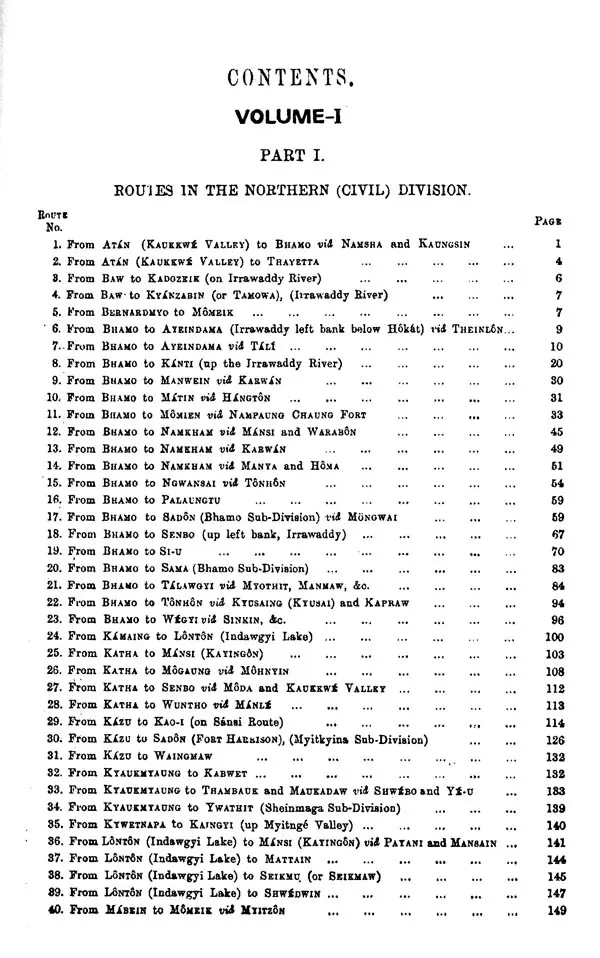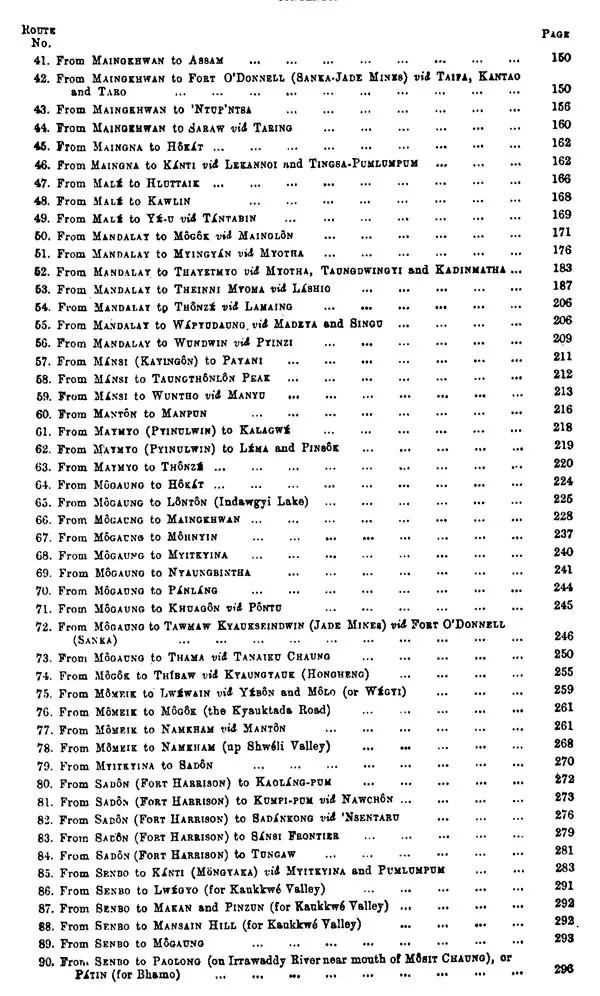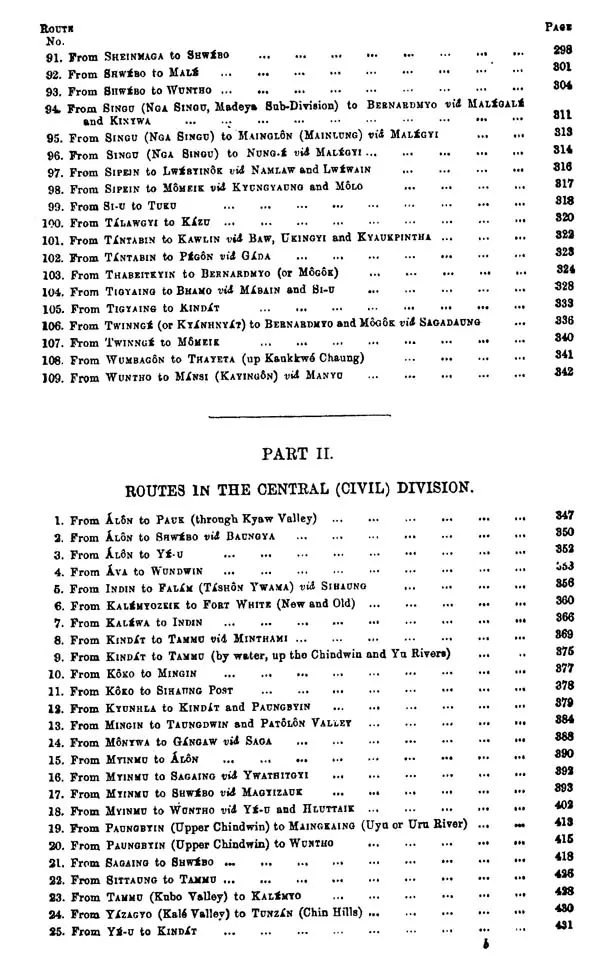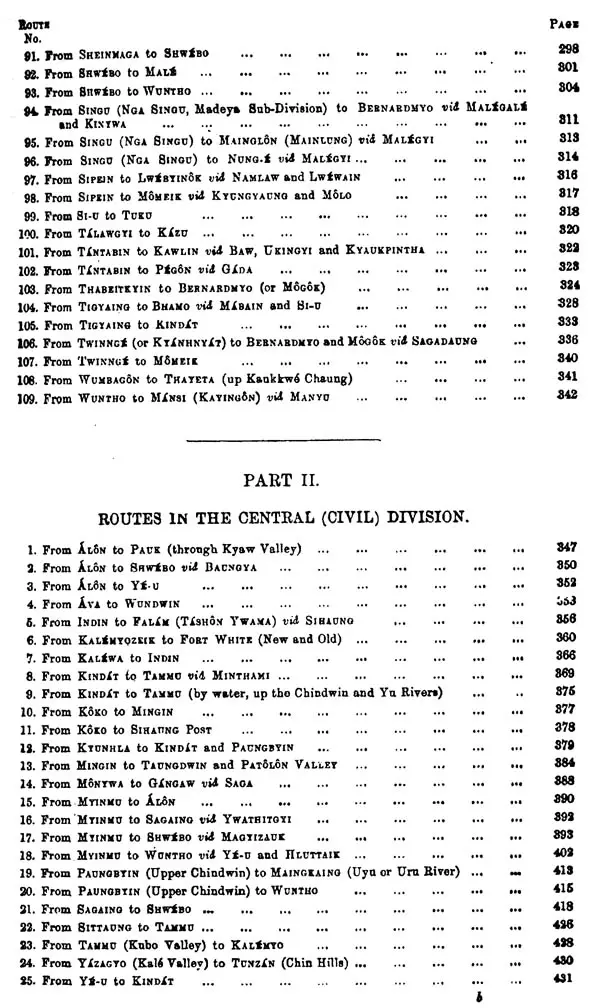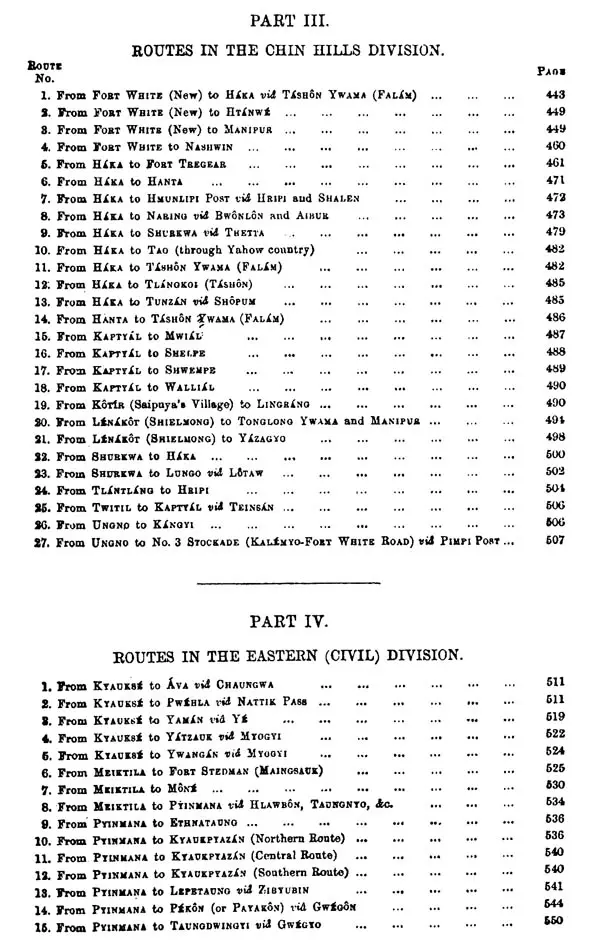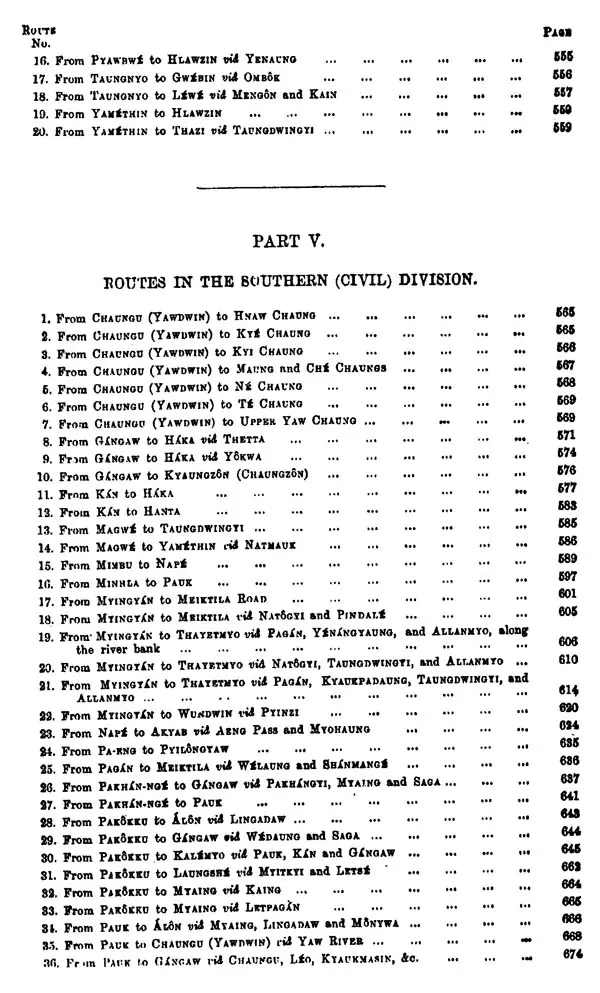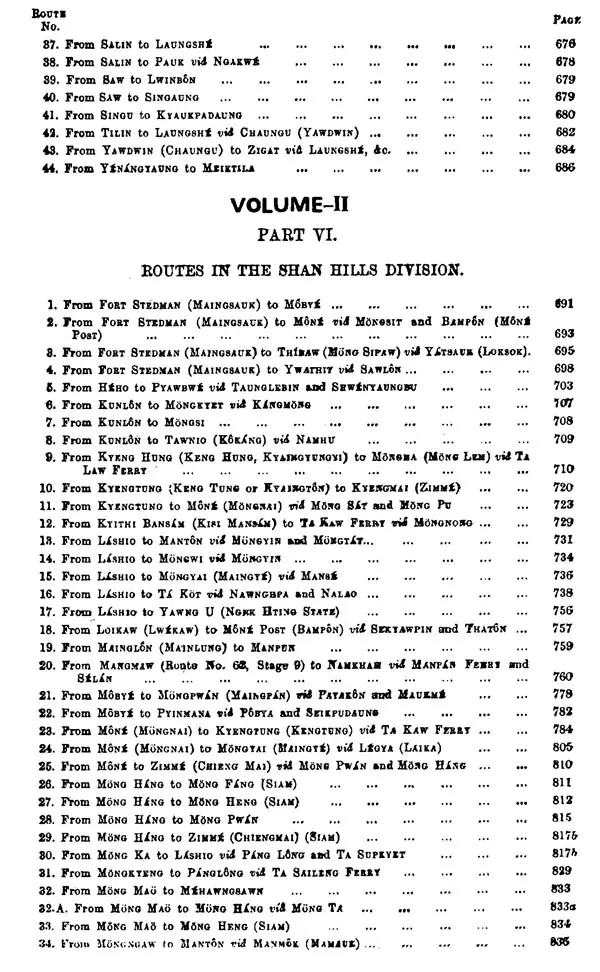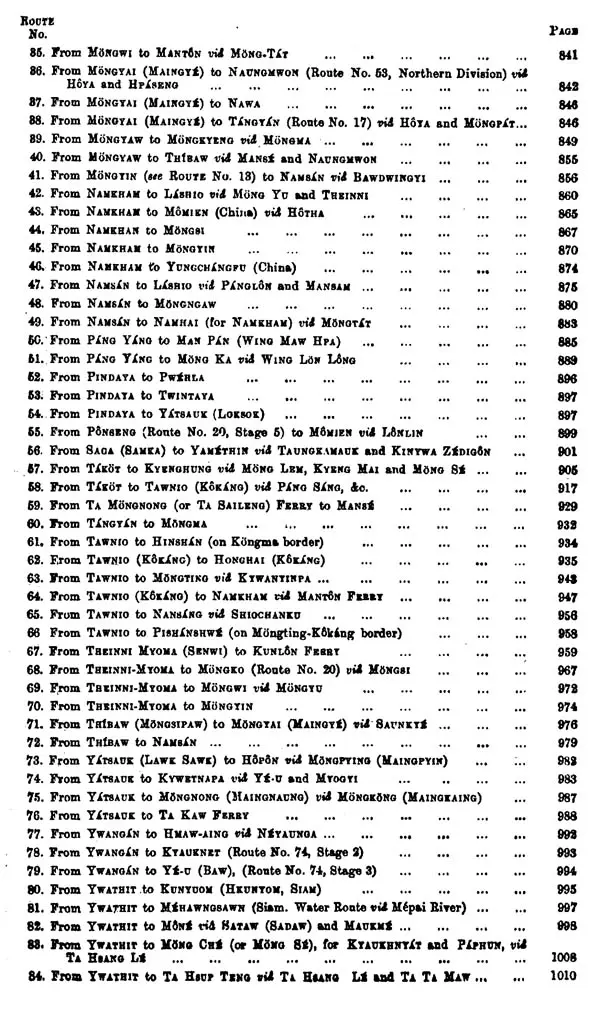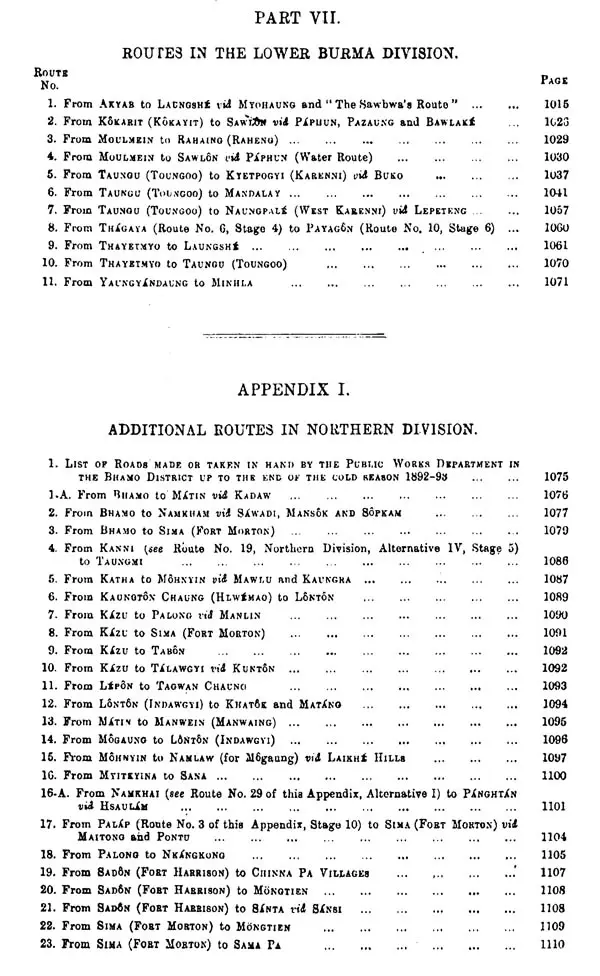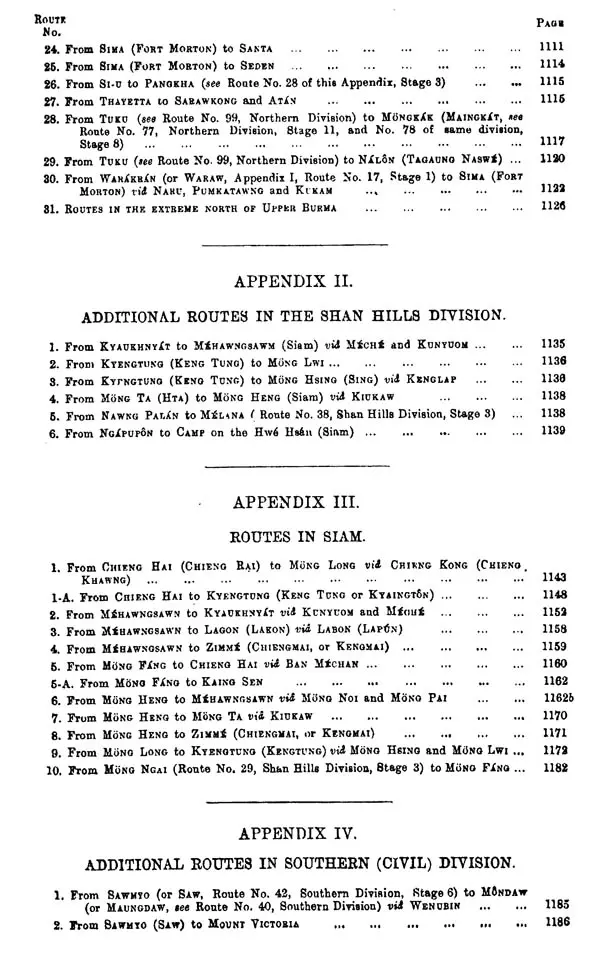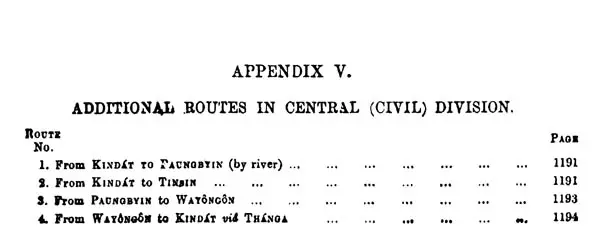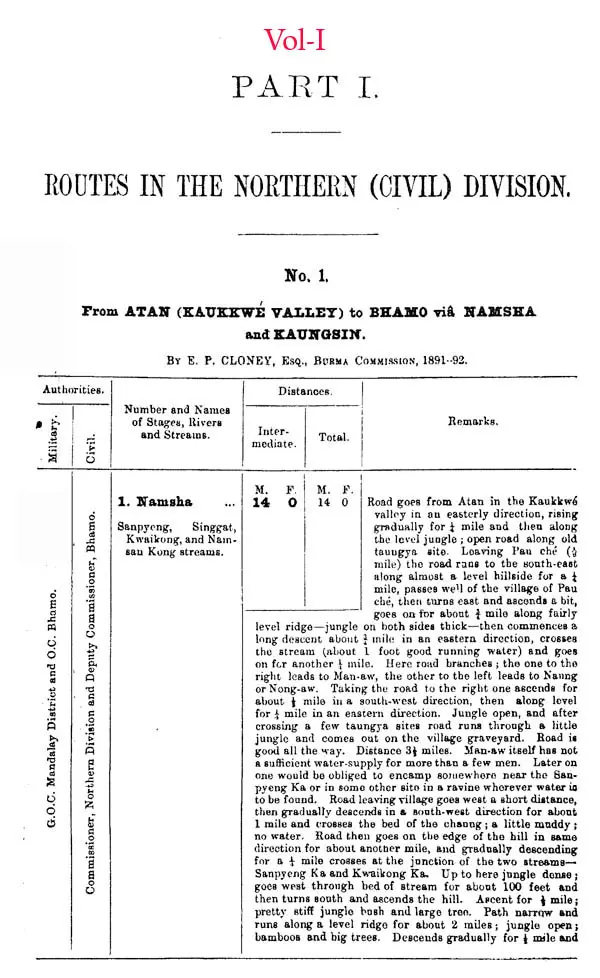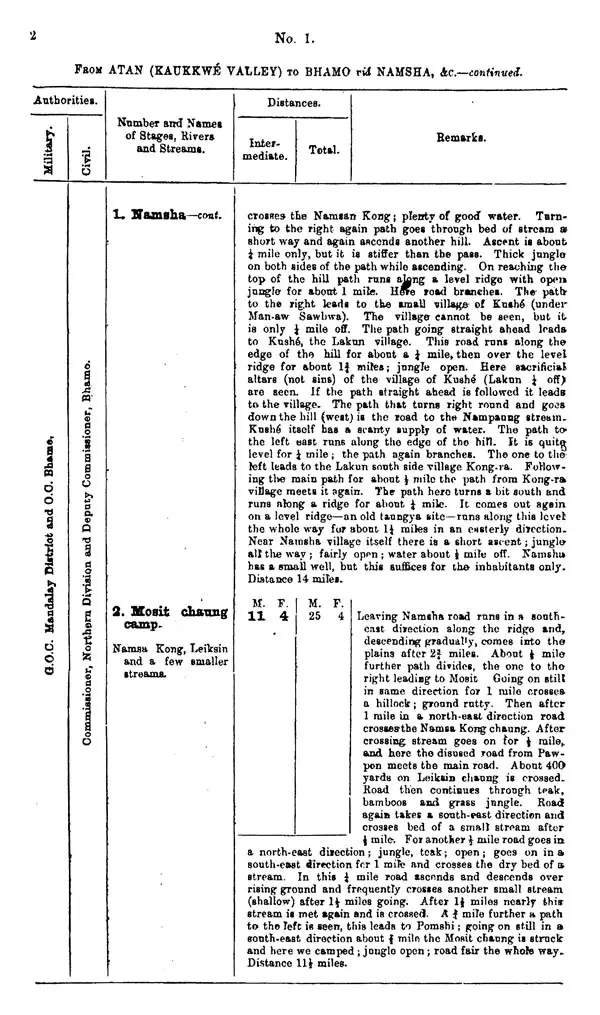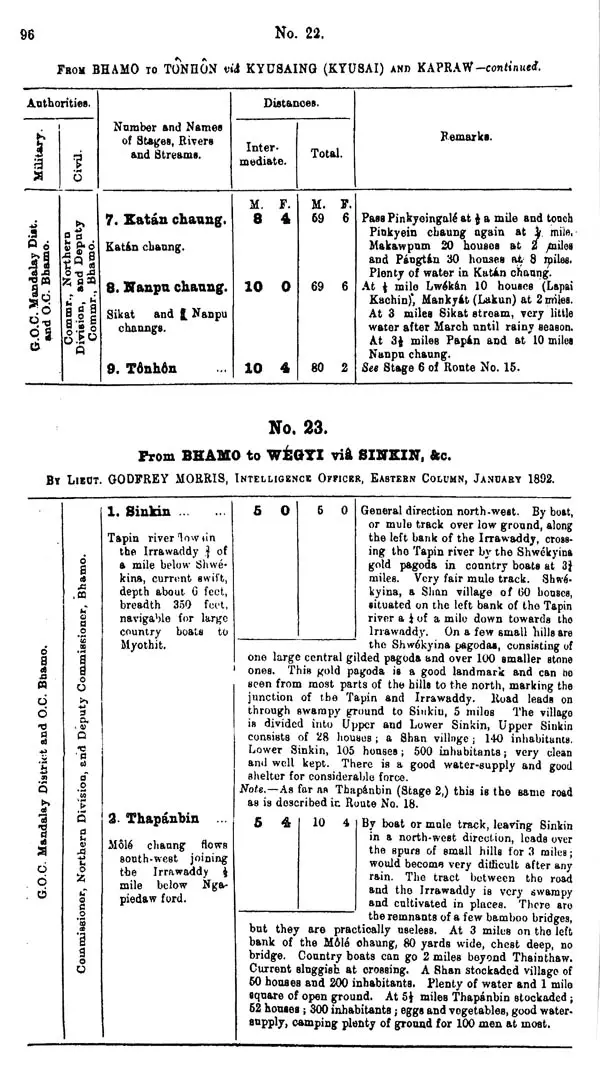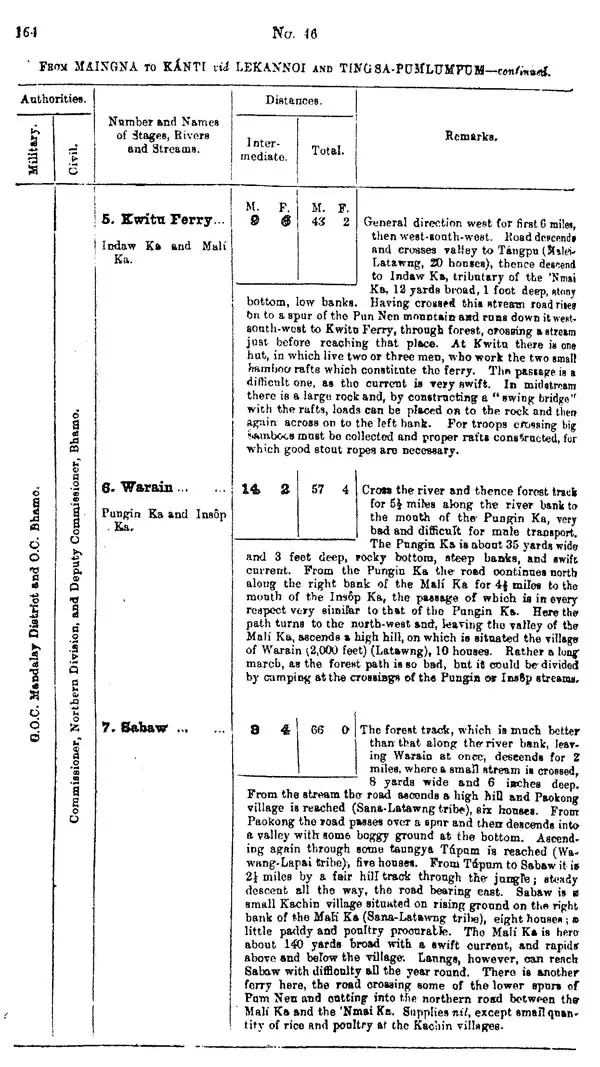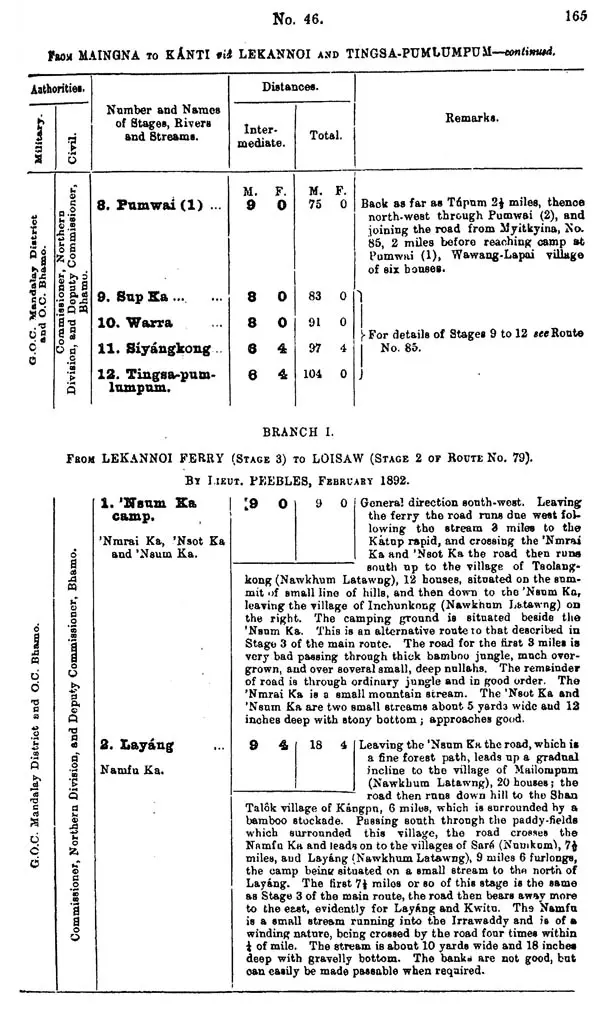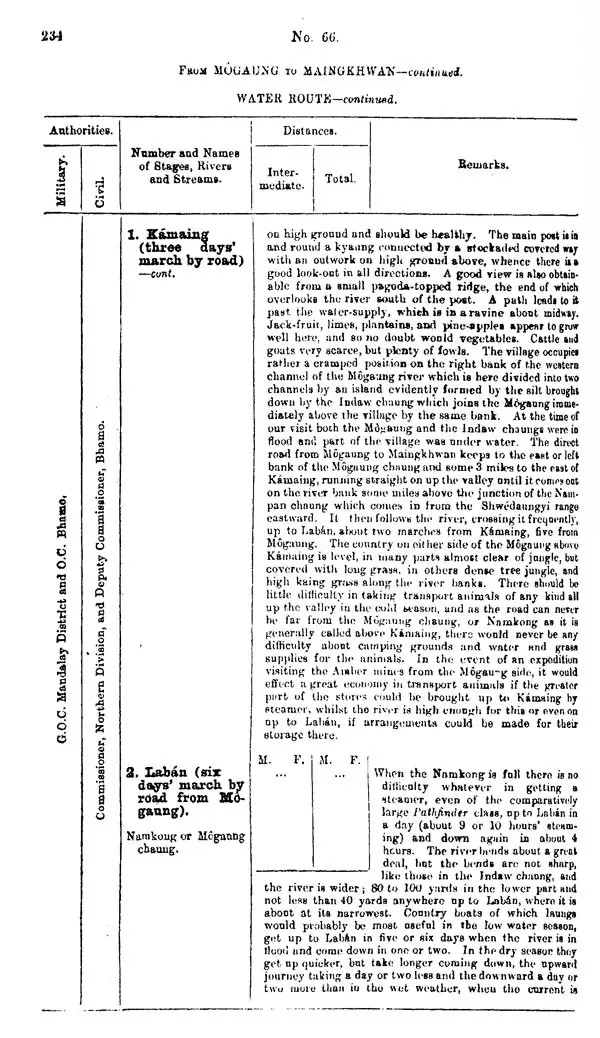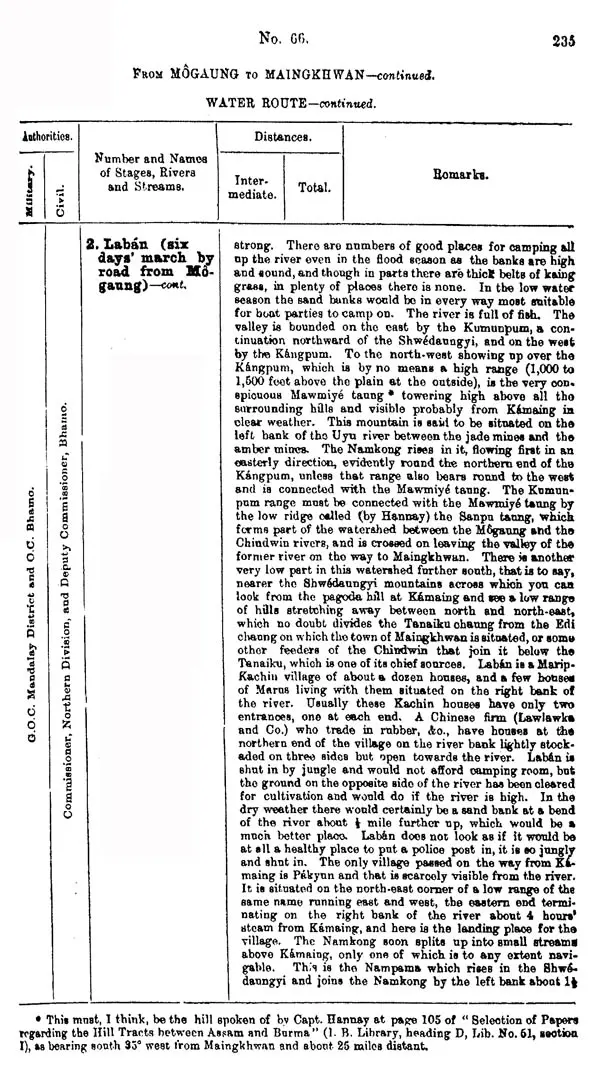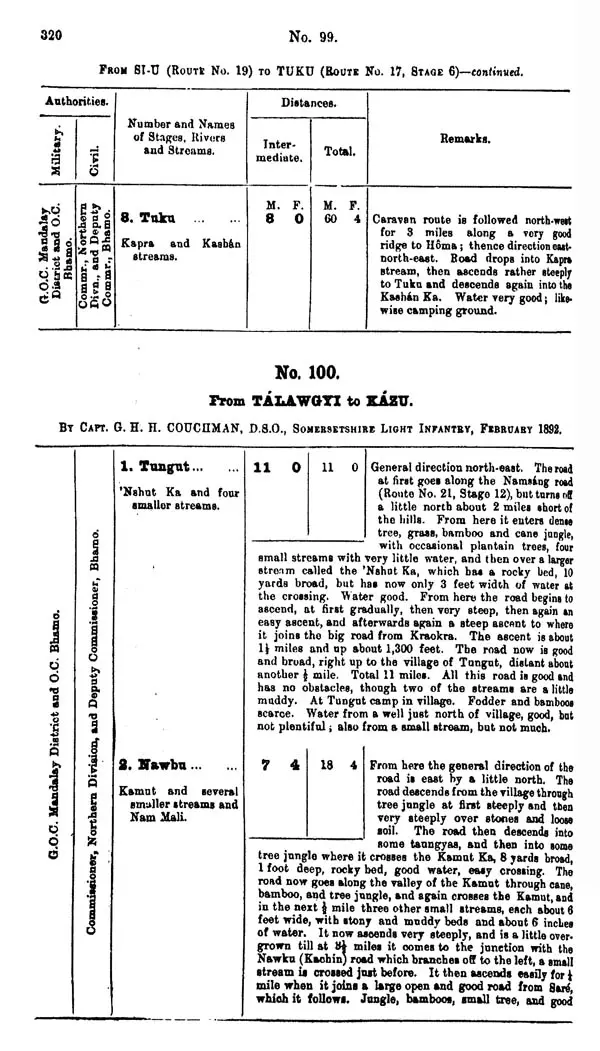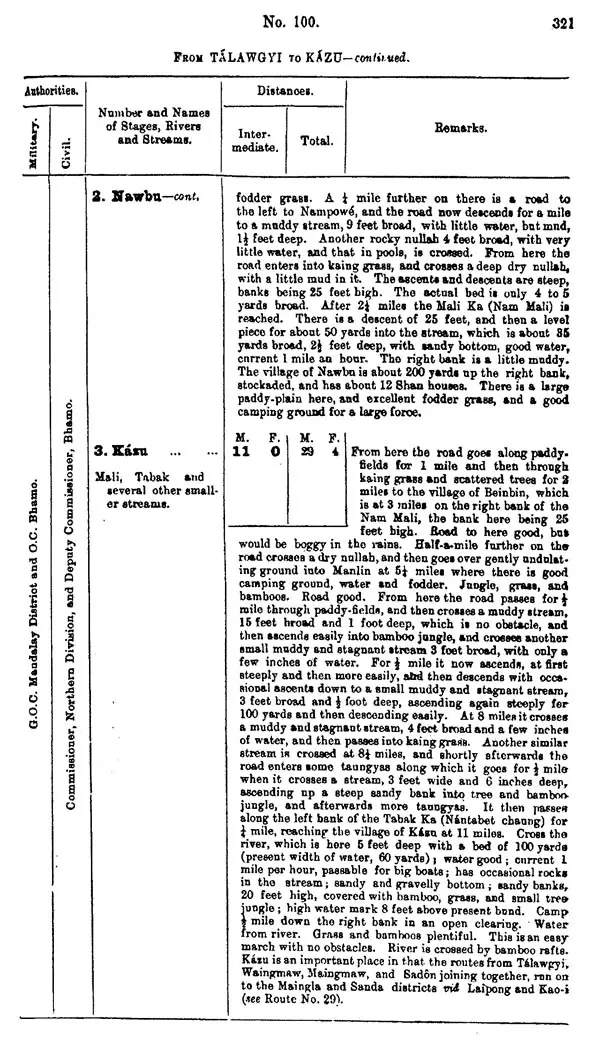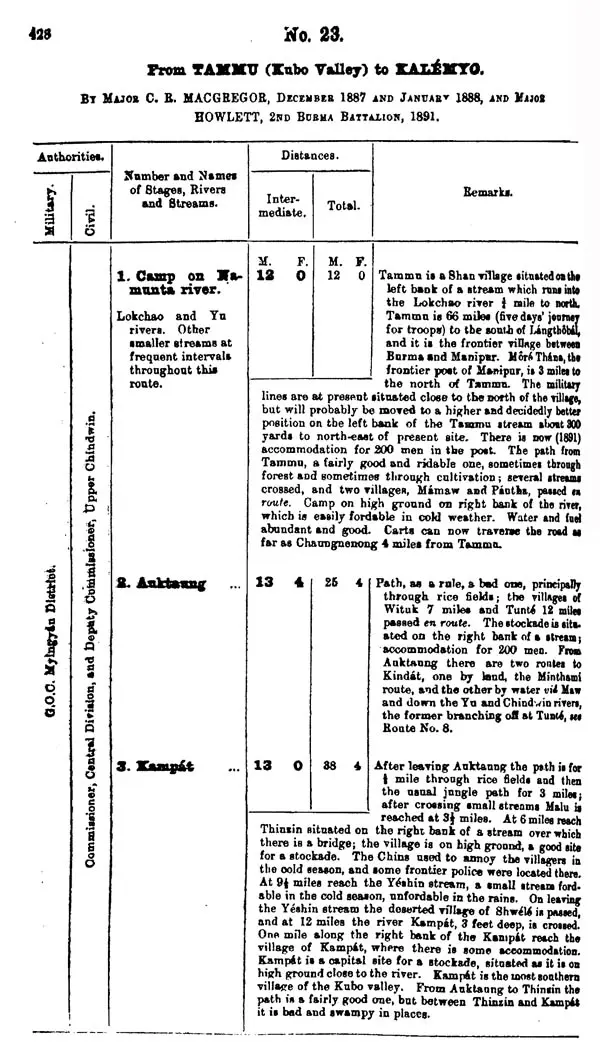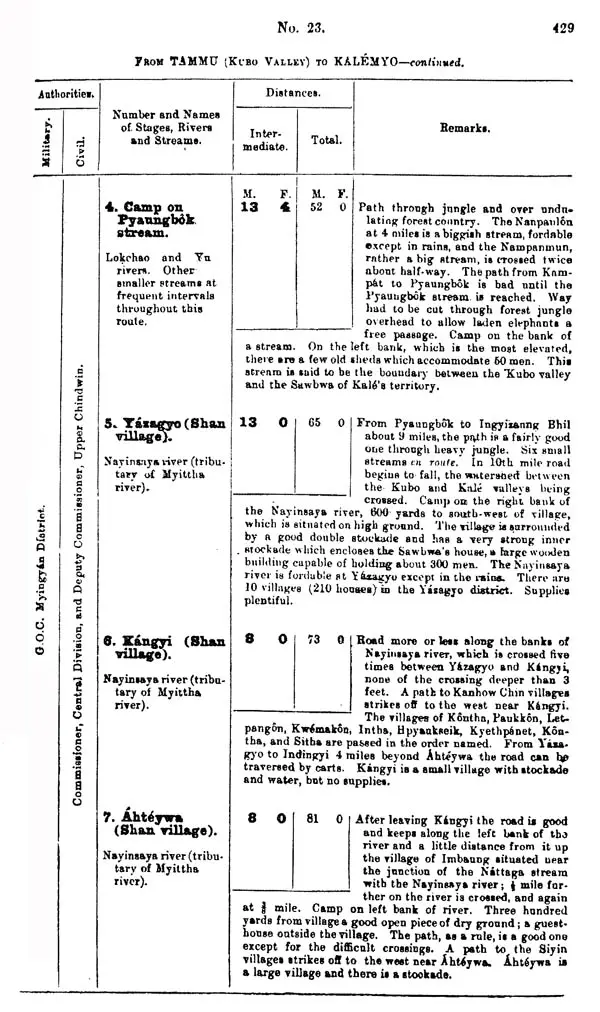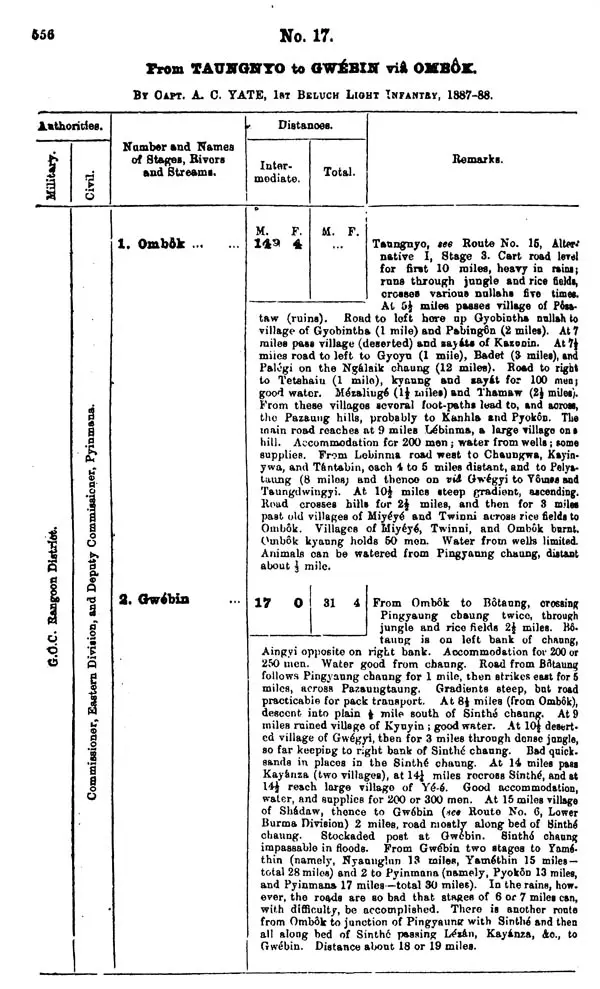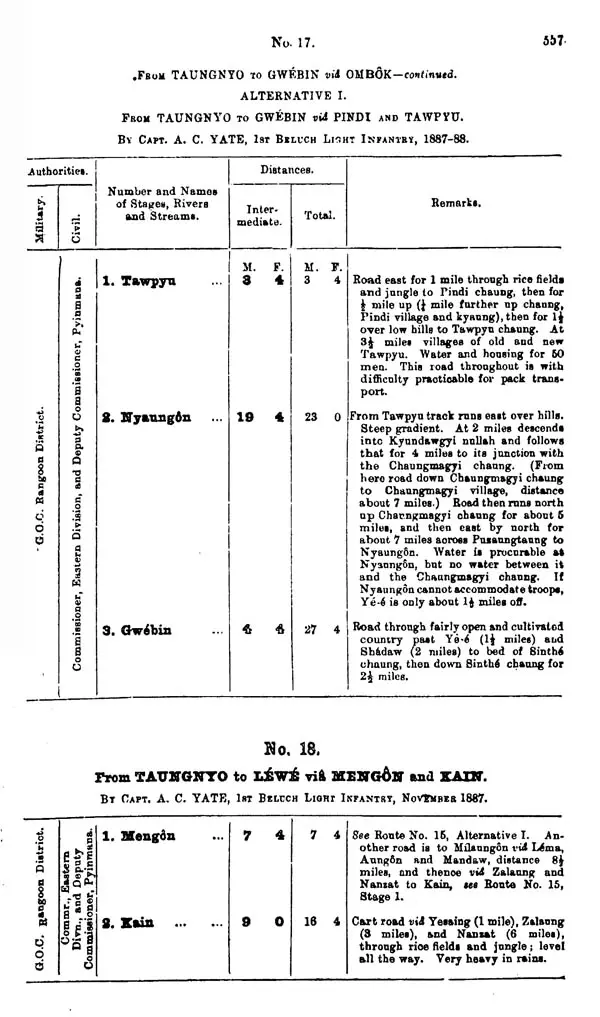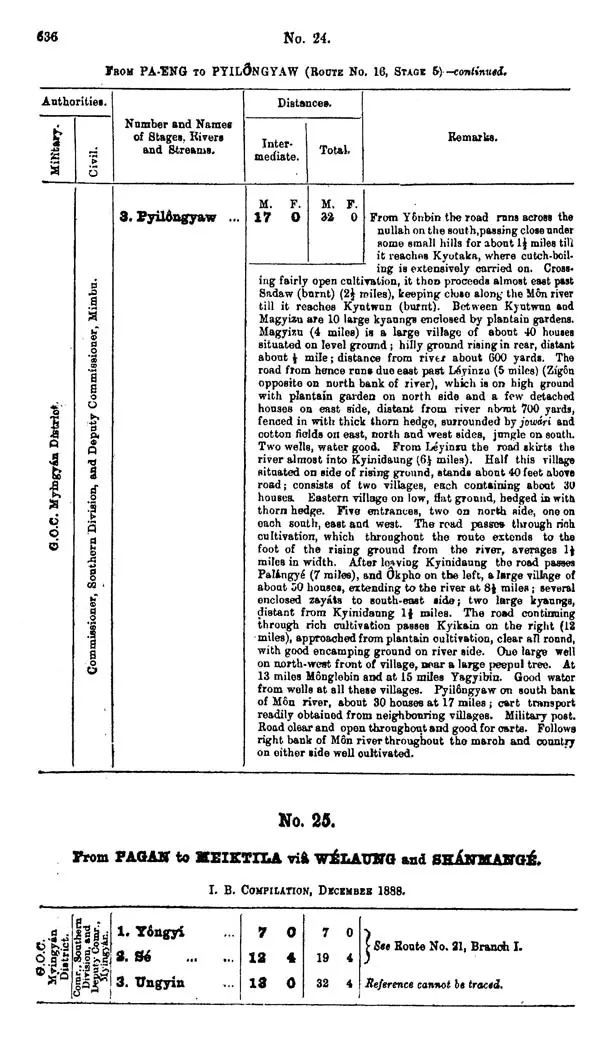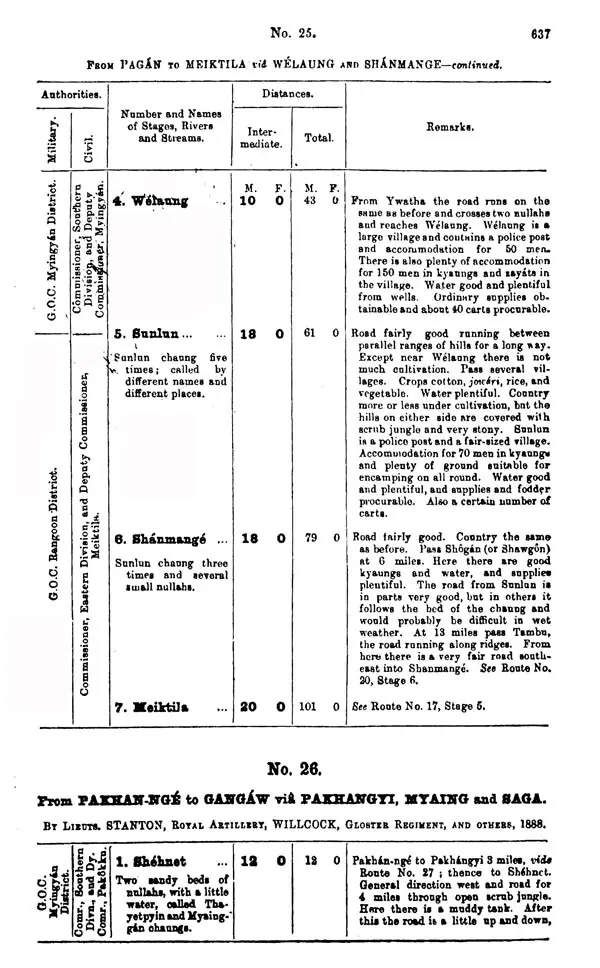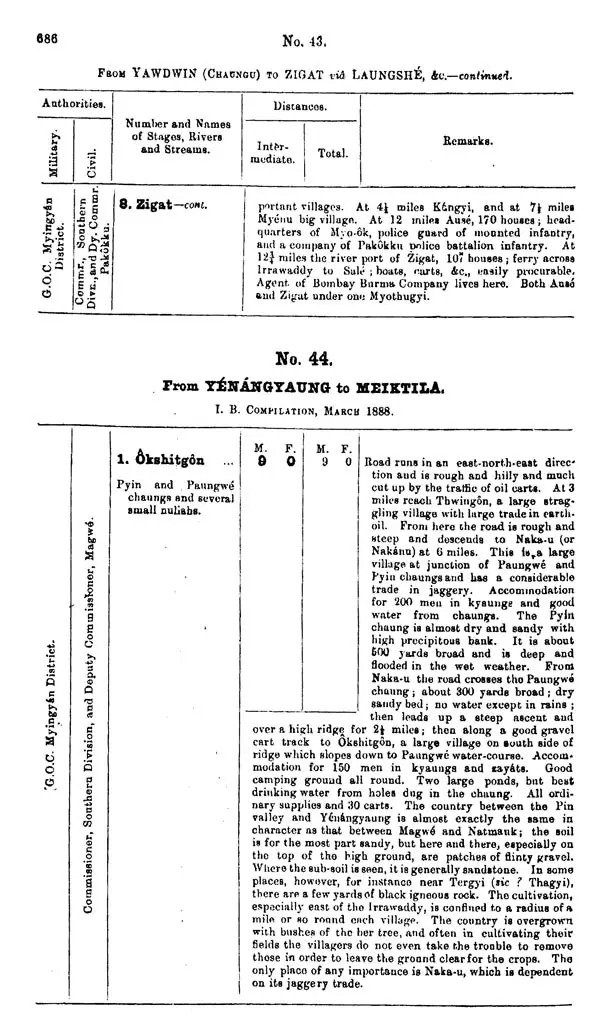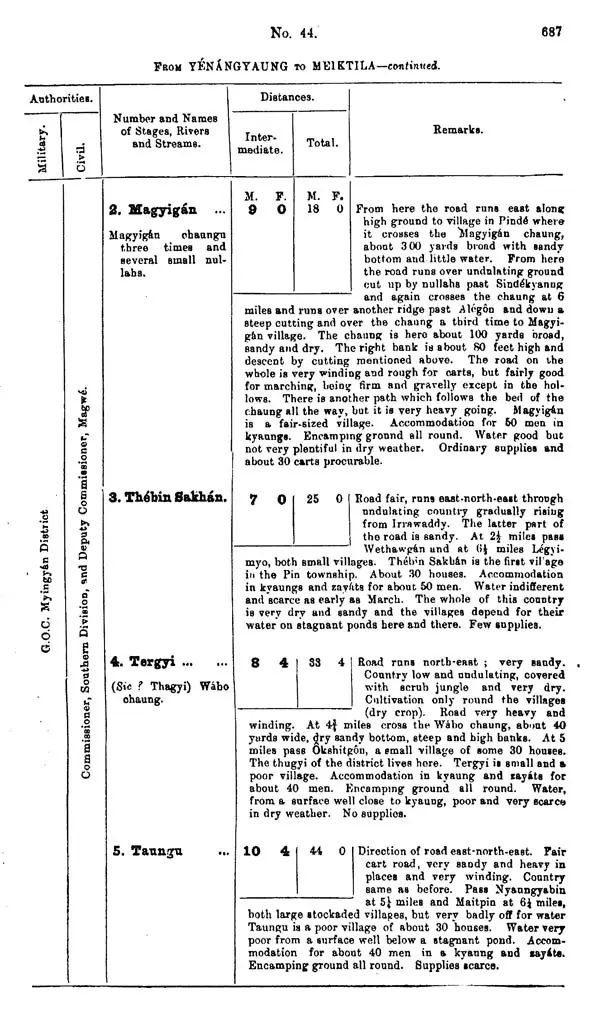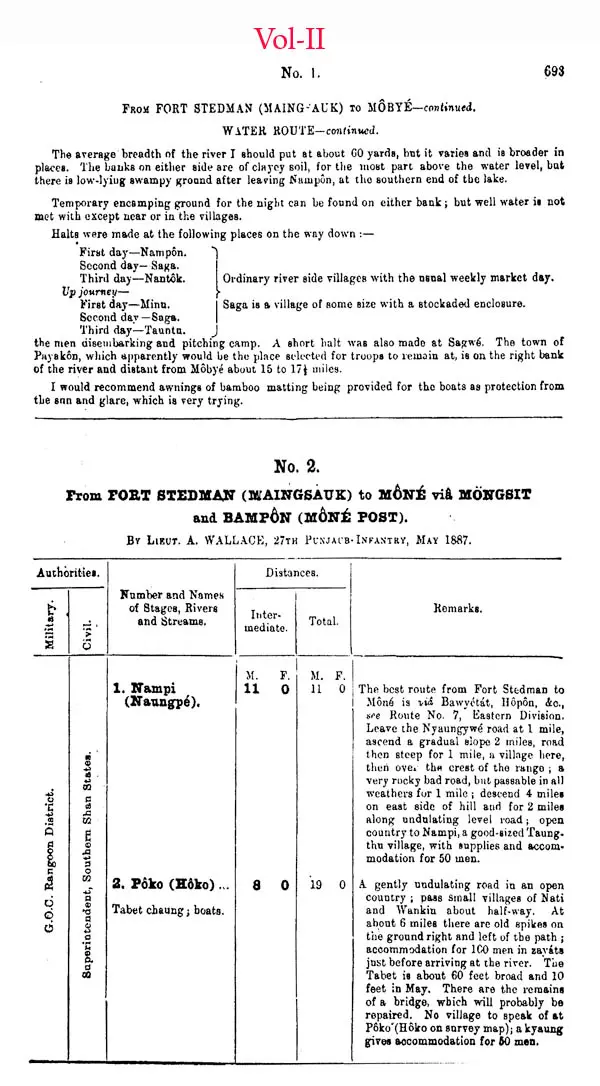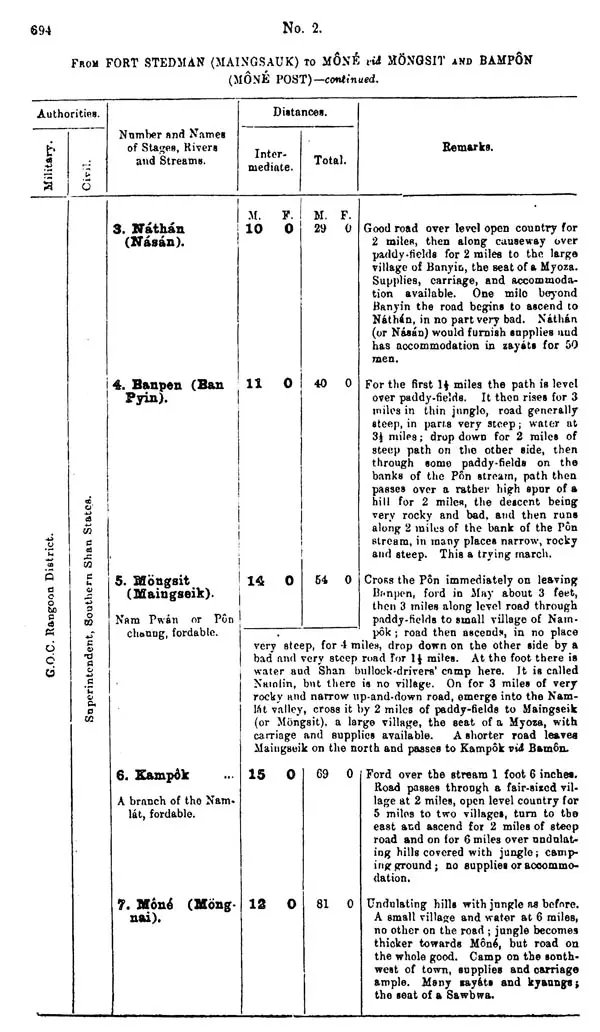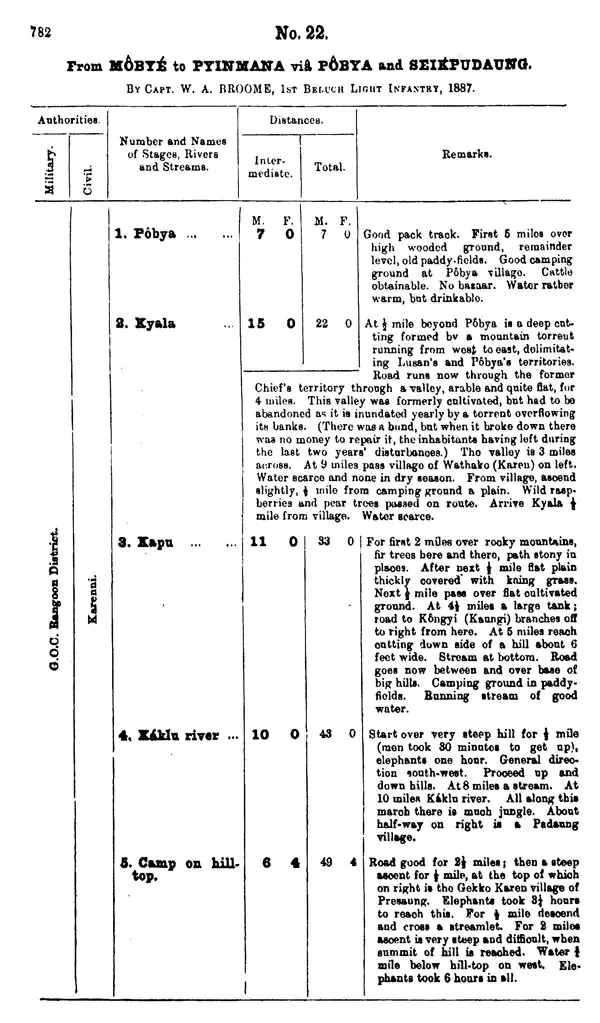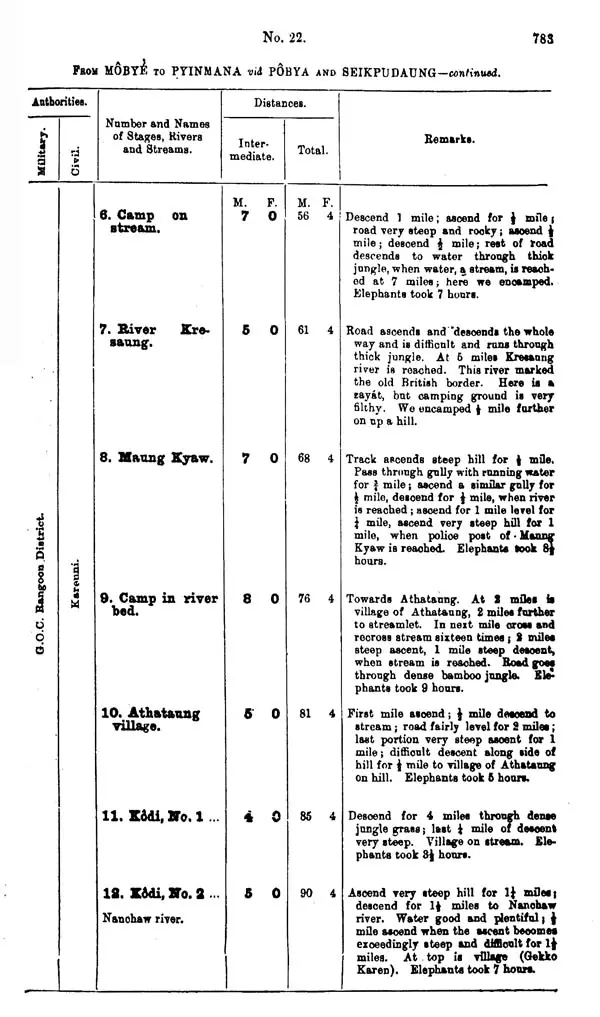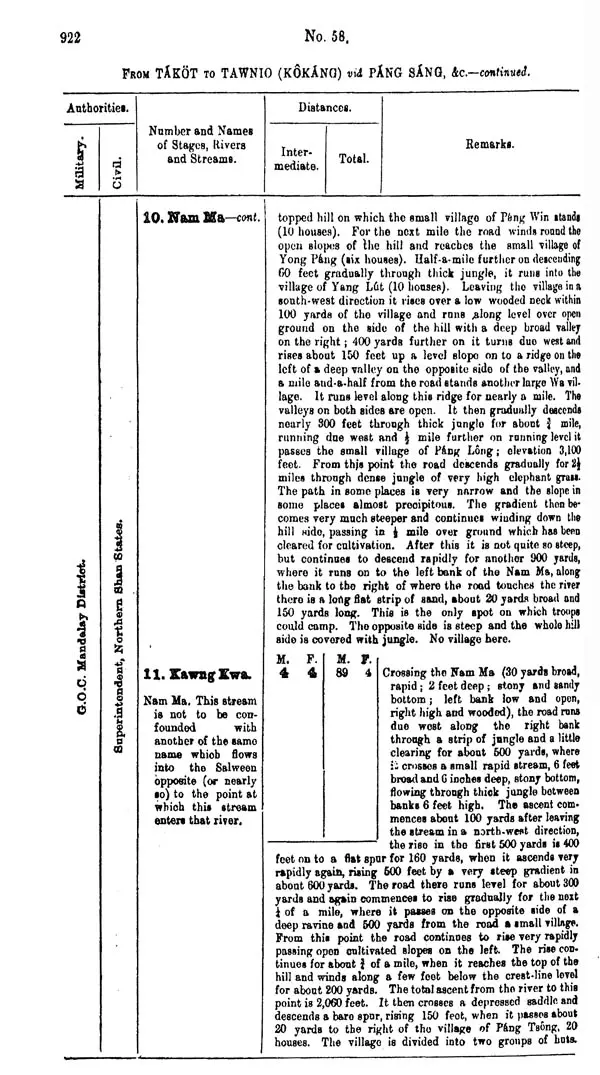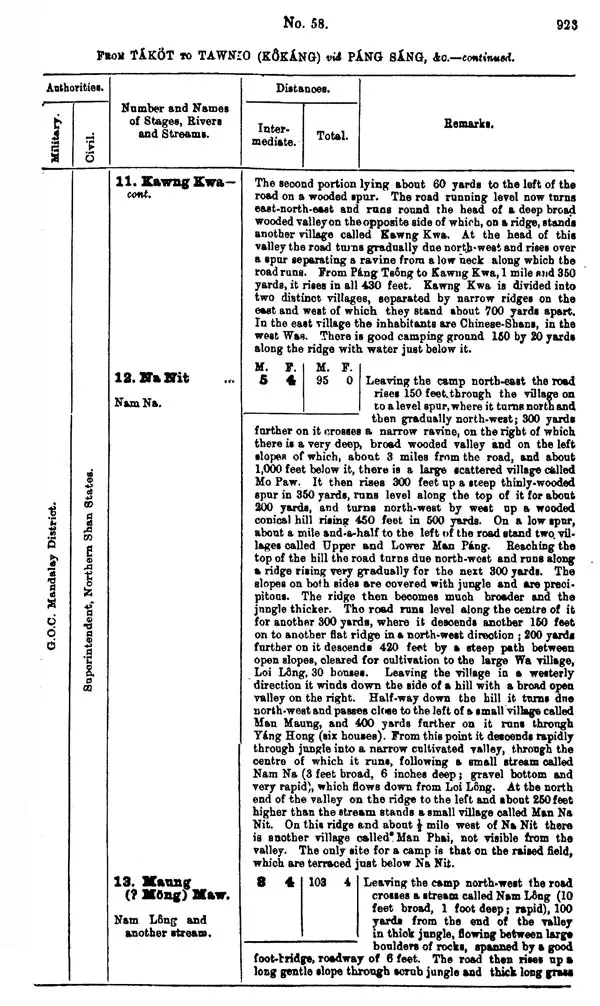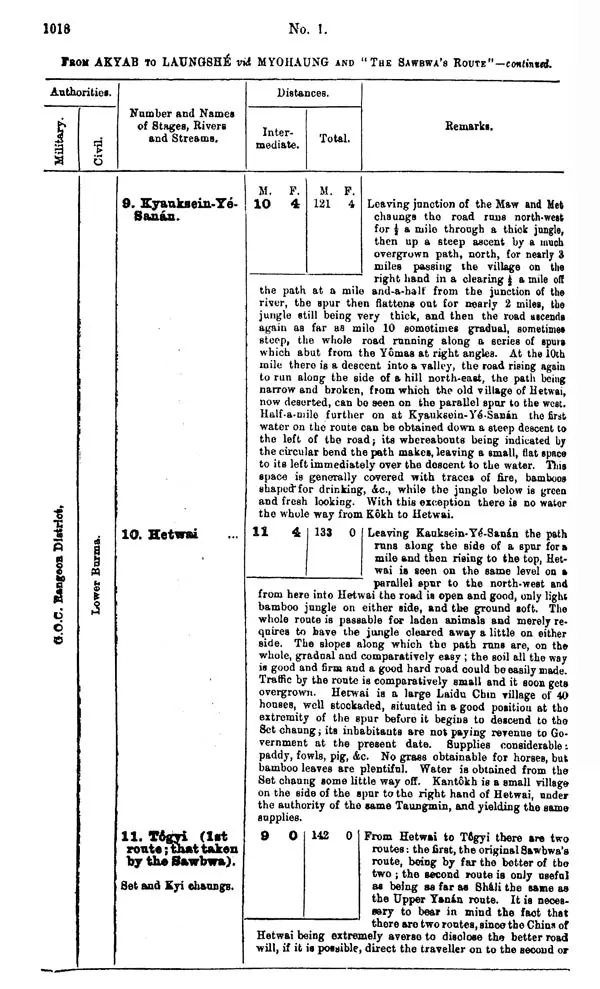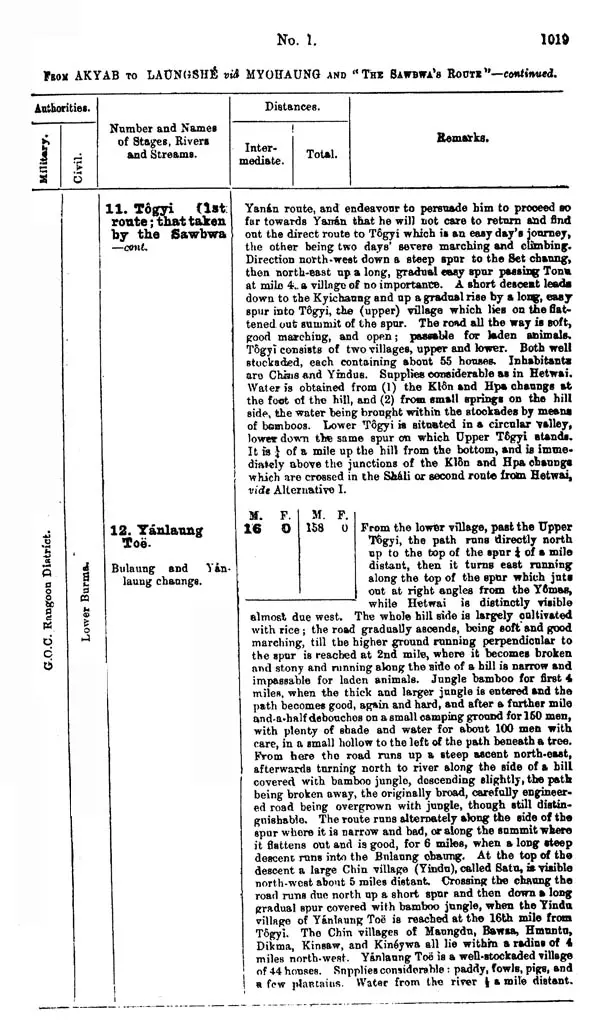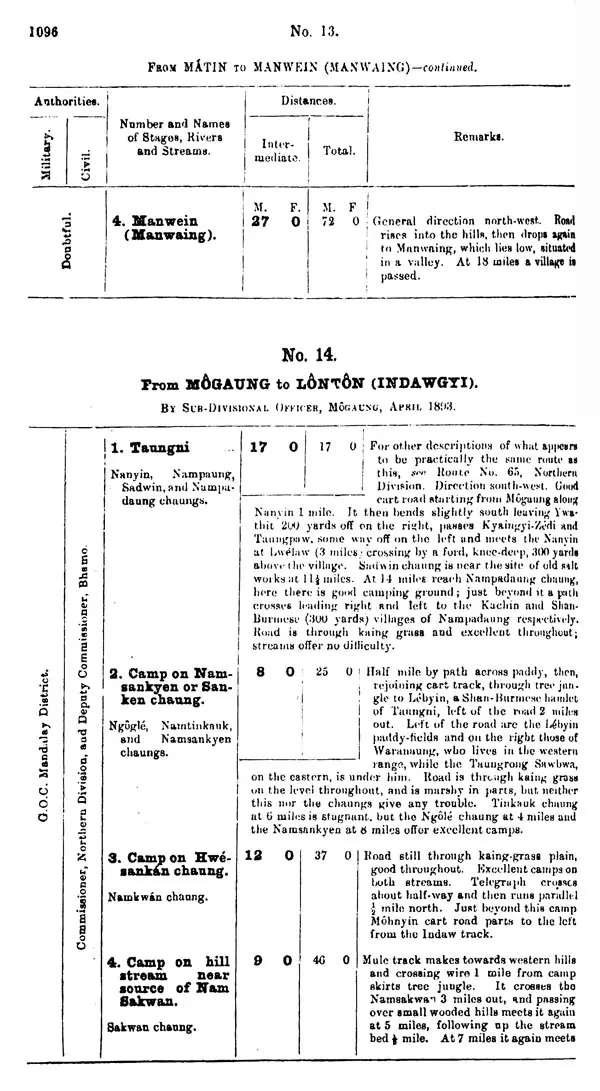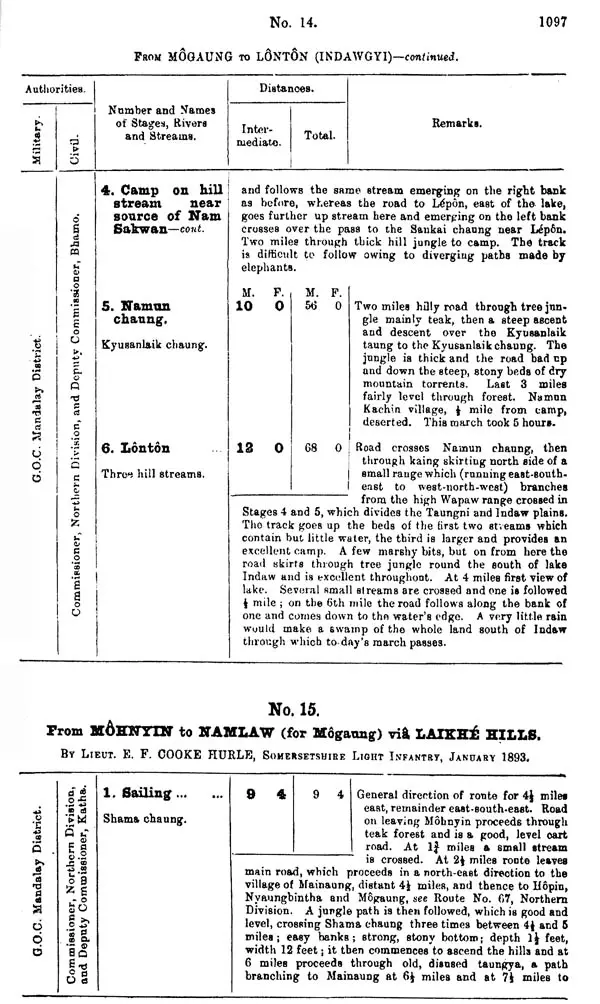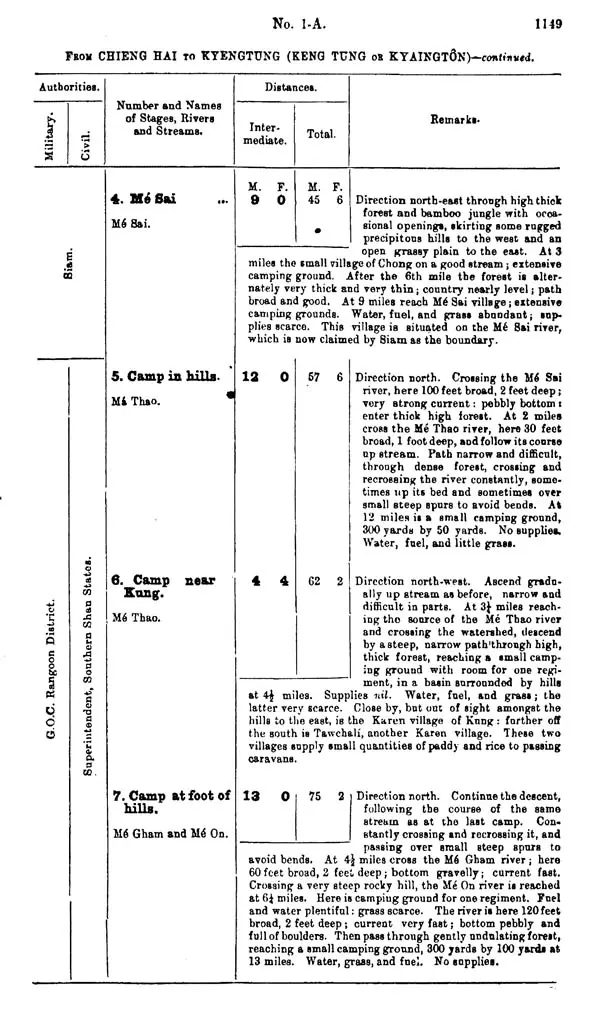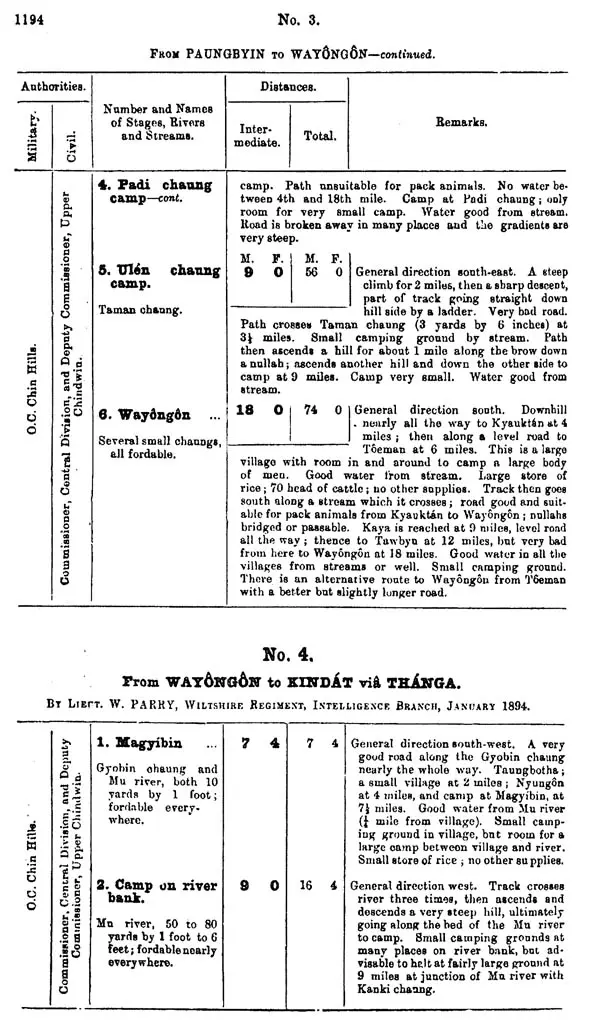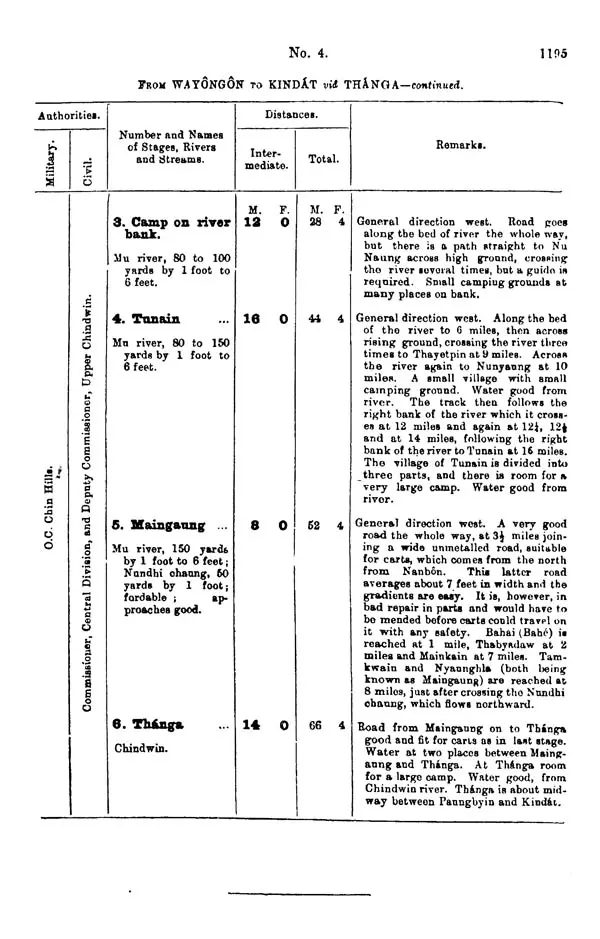
Routes in Upper Burma- Including the Chin Hills and Shan States (Set of 2 Volumes)
Book Specification
| Item Code: | UBC804 |
| Author: | Major A.B. Fenton |
| Publisher: | Gyan Publishing House, New Delhi |
| Language: | English |
| Edition: | 2018 |
| ISBN: | 9788121214742 |
| Pages: | 1120 |
| Cover: | HARDCOVER |
| Other Details | 9.00 X 6.00 inch |
| Weight | 1.61 kg |
Book Description
Burma's political history has been one of turmoil and conflict since the British first annexed the Upper Burma in 1886 into their over lordship. Upper Burma, bisected the main course of Irrawaddy river, is still considered the heartland of the country, unlike the coastal area of Lower Burma and Siam. Shan States, a region of northeast Burma, is also a hilly plateau inhabited by primitive tribes.
For annexing the hilly tribal’s inhabiting the Upper Burma, Shan States, Chin Hill s and plain people of Lower Burma and Siam, the British had to fight three big wars between 1824 to 1885 from the Indian mainland. Afterwards, the British Military Intelligence made an intensive survey of these regions for their administrative and political purposes. All the routes, existing and possible, leading from one village to another, from the plains of Lower Burma and Siam into the hilly district s of Upper Burma, Shan States and Chin Hills, were compiled in a book form with the object of having a geographical and military work of reference for the purposes of the Empire.
First published in 1894, this book is divided in 7 parts, region-wise. All the area of Upper Burma, Chin Hills, Shan States, Lower Burma and Siam has been divided territory-wise in seven Divisions-each part dealing with one Division. For convenience, the book has now been bound in two volumes. A part 1 to 5 has been taken in Volume I while parts 6 to 7 in Volume 2.
This work takes extensively from the Survey Reports from the earliest available dates, maps and notes, records of travelers and standard works on the area. It is these sources aided by personal investigations that have made this reference work indispensable for those interested in or connected with this area, academically or administratively.
In the compilation of this work every available source of information has been taken advantage of up to the date each section has gone to pross, and further information received subsequently has been added up to the latest possible date in the appendices.
Owing to the fact that for a long time there was no very special form adhered to in the transliteration of Burmese, and especially of Shan, names, so much so that even now the same name, though apparently a simple one, is found spelt in several different ways in the same route, even by the most practiced officers of the Intelligence Department, it is evident that there must be many instances of incorrect spelling and accentuation in this work, but every Endeavour has been made to adopt a uniform and, as nearly as possible, the Hunterian method of spelling. This issue of the work must, however, necessarily be considered merely a preliminary one, and it is hoped that its publication even in this imperfect form is the surest way to the production of a reliable and useful book of reference.
Communications are therefore invited from all officers and others in a position to point out mistakes or to supply additional information.
**Contents and Sample Pages**
